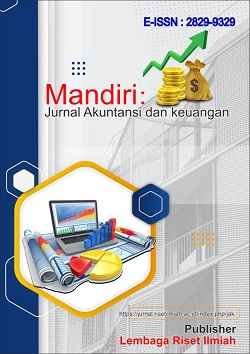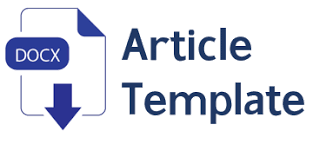Analisis Komparatif Return on Assets (ROA) PT Global Mediacom Tbk sebelum dan sesudah Initial Public Offering (IPO)
DOI:
https://doi.org/10.59086/jak.v3i1.635Keywords:
kinerja keuangan, Initial Public Offering, Bursa Efek IndonesiaAbstract
This study aims to conduct a comparative analysis of Return on Assets (ROA) in technology companies before and after their Initial Public Offering (IPO). ROA is a crucial indicator for assessing a company's financial performance and operational efficiency. The data used in this research includes several technology firms that went public within a specific time frame. The results show that most companies experienced an increase in ROA after the IPO, driven by improved access to capital and enhanced operational efficiency. However, some companies reported a decline in ROA due to rising operational costs and initial investments that had yet to yield short-term returns. These findings suggest that an IPO can positively impact ROA when supported by sound financial planning, efficient cost management, transparent financial reporting, continuous innovation, and regular strategic evaluation. This study offers valuable insights for technology firms considering an IPO and for investors seeking to understand the impact of IPOs on a company's financial performance.
References
Ball, R., & Shivakumar, L. (2008). Earnings quality at initial public offerings. Journal of Accounting and Economics, 45(2–3), 324–349.
Brav, A., & Gompers, P. A. (2003). The role of lockups in initial public offerings. Review of Financial Studies, 16(1), 1–29.
Brau, J. C., & Fawcett, S. E. (2006). Initial public offerings: An analysis of theory and practice. Journal of Finance, 61(1), 399–436.
Chen, L.-Y., & Lai, J.-H. (2023). Board Diversity and Post-IPO Performance: The Case of Technology Start-ups. Technology Analysis & Strategic Management, 36(10), 2940–2953.
Chen, Y., & Lai, K. (2023). IPO performance and asset efficiency in high-tech firms: The moderating role of innovation investment. Journal of Financial Innovation, 10(2), 101–119. https://doi.org/10.1016/j.jfi.2023.02.005
Chemmanur, T. J., & He, J. (2011). IPOs, Product Market Competition, and the Going Public Decision: Theory and Evidence. Journal of Financial Economics, 102(2), 316–336.
Chemmanur, T. J., & He, J. (2011). IPO waves, product market competition, and the going public decision: Theory and evidence. Journal of Financial Economics, 101(2), 382–412. https://doi.org/10.1016/j.jfineco.2011.03.006
Ciftci, M., Kraft, A., & Qu, X. (2014). Accounting Quality in the Pre‐IPO Period and IPO Valuation. Contemporary Accounting Research, 31(2), 401–428.
Fama, E. F., & French, K. R. (2004). New lists: Fundamentals and survival rates. Journal of Financial Economics, 73(2), 229–269. https://doi.org/10.1016/j.jfineco.2003.04.001
Gao, X., Ritter, J. R., & Zhu, Z. (2013). Where have all the IPOs gone? Journal of Financial and Quantitative Analysis, 48(6), 1663–1692. https://doi.org/10.1017/S0022109014000015
Hsu, D. H., Hwang, B. H., & Liu, Q. (2010). Synergistic effects of market liberalization and privatization: Evidence from China's IPO market. Review of Financial Studies, 23(11), 3841–3874.
Jain, B. A., & Kini, O. (1994). The post-issue operating performance of IPO firms. Journal of Finance, 49(5), 1699–1726. https://doi.org/10.1111/j.1540-6261.1994.tb04778.x
Kim, W., & Weisbach, M. S. (2008). Motivations for public equity offers: An international perspective. Journal of Financial Economics, 87(2), 281–307.
Liu, X., Sherman, A. E., & Zhang, Y. (2014). The Long-Run Performance of IPOs: Does Venture Capital Reputation Matter? Journal of Financial Economics, 110(1), 26–47.
Liu, X., Wang, C., & Zhang, W. (2014). Do IPOs improve firm efficiency? Evidence from China. Emerging Markets Review, 18, 25–41. https://doi.org/10.1016/j.ememar.2013.11.001
Loughran, T., & Ritter, J. R. (1995). The new issues puzzle. The Journal of Finance, 50(1), 23–51. https://doi.org/10.1111/j.1540-6261.1995.tb05166.x
Loughran, T., & Ritter, J. R. (2004). Why has IPO underpricing changed over time? Financial Management, 33(3), 5–37. https://doi.org/10.2307/3666146
Pagano, M., Panetta, F., & Zingales, L. (1998). Why do companies go public? An empirical analysis. Journal of Finance, 53(1), 27–64. https://doi.org/10.1111/0022-1082.25448
Pastor, L., & Veronesi, P. (2005). Rational IPO waves. Journal of Finance, 60(4), 1713–1757.
Penman, S. H. (2013). Financial statement analysis and security valuation (5th ed.). McGraw-Hill Education.
Ritter, J. R. (1991). The long-run performance of initial public offerings. The Journal of Finance, 46(1), 3–27. https://doi.org/10.1111/j.1540-6261.1991.tb03743.x
Ritter, J. R., & Welch, I. (2002). A Review of IPO Activity, Pricing, and Allocations. Journal of Finance, 57(4), 1795–1828. https://doi.org/10.1111/1540-6261.00478
Siregar, F., Achsani, N. A., & Bandono, B. (2024). The Company’s Financial Performance Pre and Post IPO on The Indonesia Stock Exchange. Business Review and Case Studies, 5(1), 35.
Siregar, R., Nurmalita, D., & Hasanah, U. (2024). IPO and firm performance: Evidence from technology companies in Southeast Asia. International Journal of Business and Management Review, 12(1), 45–58.
Spence, M. (1973). Job market signaling. The Quarterly Journal of Economics, 87(3), 355–374. https://doi.org/10.2307/1882010
Teoh, S. H., Welch, I., & Wong, T. J. (1998). Earnings management and the long‐run market performance of initial public offerings. Journal of Finance, 53(6), 1935–1974.
Wu, X., Wang, Z., & Yao, W. (2015). Does IPO lead to better firm performance? Evidence from China’s GEM market. China Journal of Accounting Research, 8(2), 127–139. https://doi.org/10.1016/j.cjar.2015.01.001
Wu, Y., et al. (2015). Company Profitability Before and After IPO: Is it a Windows Dressing or Equity Dilution Effect? ResearchGate. https://www.researchgate.net/publication/283182143
Downloads
Published
How to Cite
Issue
Section
License
Copyright (c) 2024 Wensy Adelia

This work is licensed under a Creative Commons Attribution 4.0 International License.
Mandiri Jurnal Akuntansi dan Keuangan
Publisher Lembaga Riset Ilmiah
© 2025

This work is licensed under a Creative Commons Attribution 4.0 International License.












